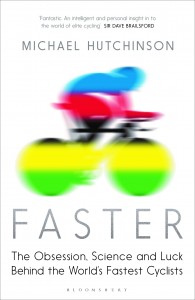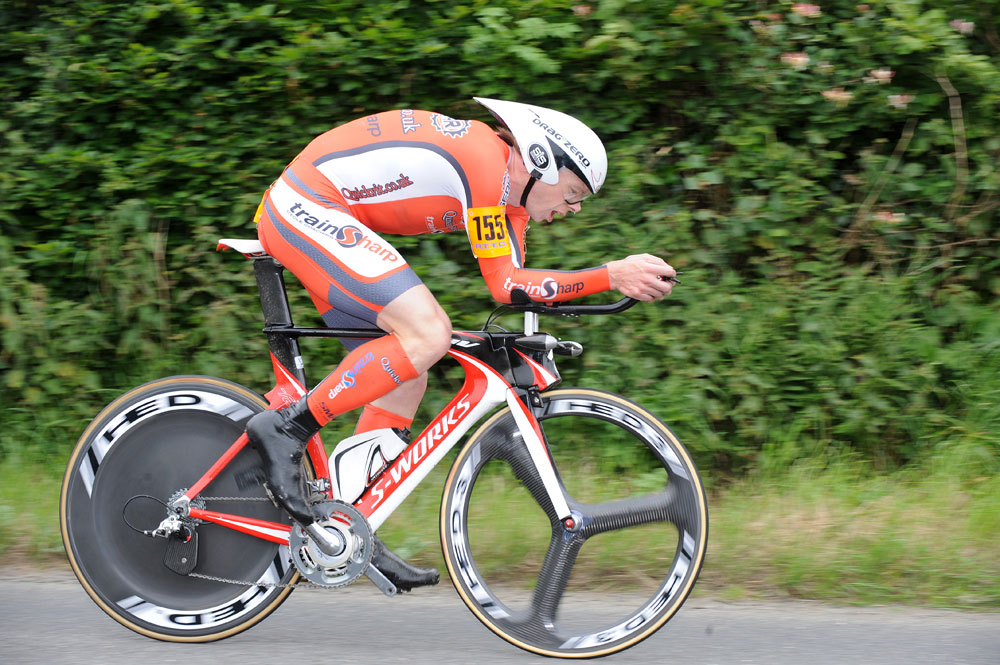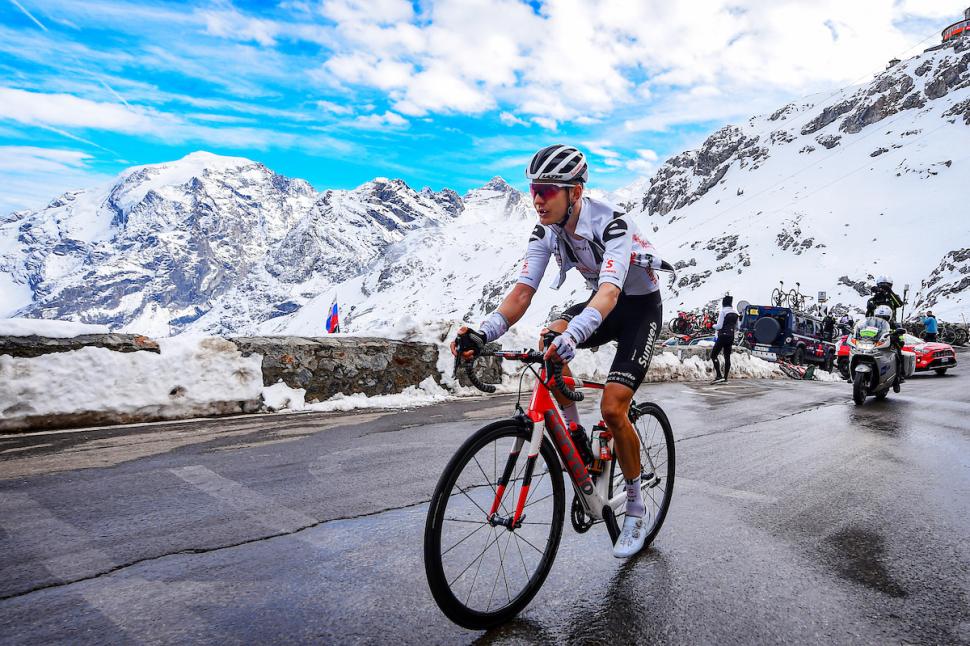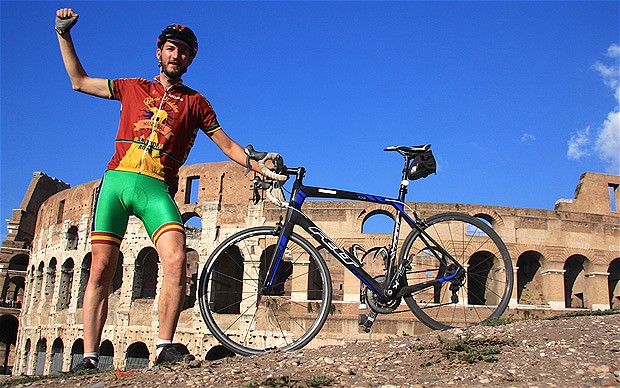 Michael Hutchinson was obsessed. The former professional time-trialist slept in a tent to try and replicate high altitude training, even though the pump that reduced the oxygen content made a noise like an outboard motor. He rode around Manchester’s Velodrome naked to see if bare skin was faster than Lycra (it wasn’t, which is just as well, given the arguments about how cycling can be made more televisual). He admits that one of his best moments in bike racing wasn’t winning a time trial, but cracking 90ml/m/kg in a VO² max test in a lab – the measure of maximum aerobic capacity. Hutchison’s figures are higher than any cyclist he or any of the GB cycling coaches have come across. But if Hutchinson was that good in the lab, why isn’t he a household name like Wiggins, Hoy or Cavendish?
Michael Hutchinson was obsessed. The former professional time-trialist slept in a tent to try and replicate high altitude training, even though the pump that reduced the oxygen content made a noise like an outboard motor. He rode around Manchester’s Velodrome naked to see if bare skin was faster than Lycra (it wasn’t, which is just as well, given the arguments about how cycling can be made more televisual). He admits that one of his best moments in bike racing wasn’t winning a time trial, but cracking 90ml/m/kg in a VO² max test in a lab – the measure of maximum aerobic capacity. Hutchison’s figures are higher than any cyclist he or any of the GB cycling coaches have come across. But if Hutchinson was that good in the lab, why isn’t he a household name like Wiggins, Hoy or Cavendish?
It’s this question that underpins Faster, as Hutchinson explores every technique 21st century cyclists use to make the very most of their bodies. “Marginal gains” has been the buzz-phrase in the spectacular success of British Cycling – the way in which every small process in the life of an athlete is broken down into its component elements to see if improvements can be made. Faster is a forensic look at what that actually means, from diet to training, technology to psychology.
Refreshingly, Hutchinson knows ridiculous the whole enterprise can seem from the outside. “I’m aware that I may have managed to make the art of fast bike riding look awfully complicated,” he writes. “In some ways, ‘marginal gains’ is a very swishy term for a fine print pursuit of the moderately obvious.” But while there have been plenty of books which have explored British Cycling’s pathway to success in the 21st century, to find someone who has experience of some parts of that journey and can also write is rare.
I reviewed his first book, The Hour, for Metro back in 2006, and while I was slightly sniffy about the premise at the time (it was billed as a kind of ‘man in street takes on hour record’ without really disclosing that he had been a professional cyclist for a while), the narrative was well told. And Faster is absolutely not a manual to success – despite sentences detailing the importance of myofibrils, sarcomeres and myofilaments to skeletal muscles palling slightly, they’re within the context of a fascinating broader picture.
The myofibrils are in the chapter about the physiology of an athlete, which breaks down how the make-up of Wiggins and Cavendish allowed them to win races. When Hutchinson investigates the technology (ie the bikes and the equipment) he speaks to Chris Boardman, who tells him the most useful people for his ‘secret squirrel’ research and development team were those who had nothing to do with cycling but asked the obvious questions about a bike frame, or a skinsuit. For the ‘psychology of an athlete’ section Hutchinson, naturally, goes to see the increasingly ubiquitous Professor Steve Peters, author of the Chimp Paradox and who Hoy, Pendleton and many others credit with their success. Interestingly, they don’t get on until Peters tells him to stop asking for any ‘universal’ solutions that just so-happen to apply to him. Hutchinson, semi-retired at that point, still wanted to go faster.
And Hutchinson admits that he could have gone faster with more attention to detail regarding nutrition and training. But that’s with hindsight. He started his cycling career late, and before British Cycling flew in the face of accepted traditions, bringing in best practice from other sports – a factor Hutchinson thinks has been crucial. Happily, though, Faster never loses sight of the basics. “Cycling is a sport of details, of tactics, technology, training and psychology,” he writes. “But before it is any of those things, it is a sport that depends on how hard you can turn the pedals.”
Faster: The Obsession, Science and Luck Behind the World’s Fastest Cyclists (Bloomsbury) is out now in paperback.


